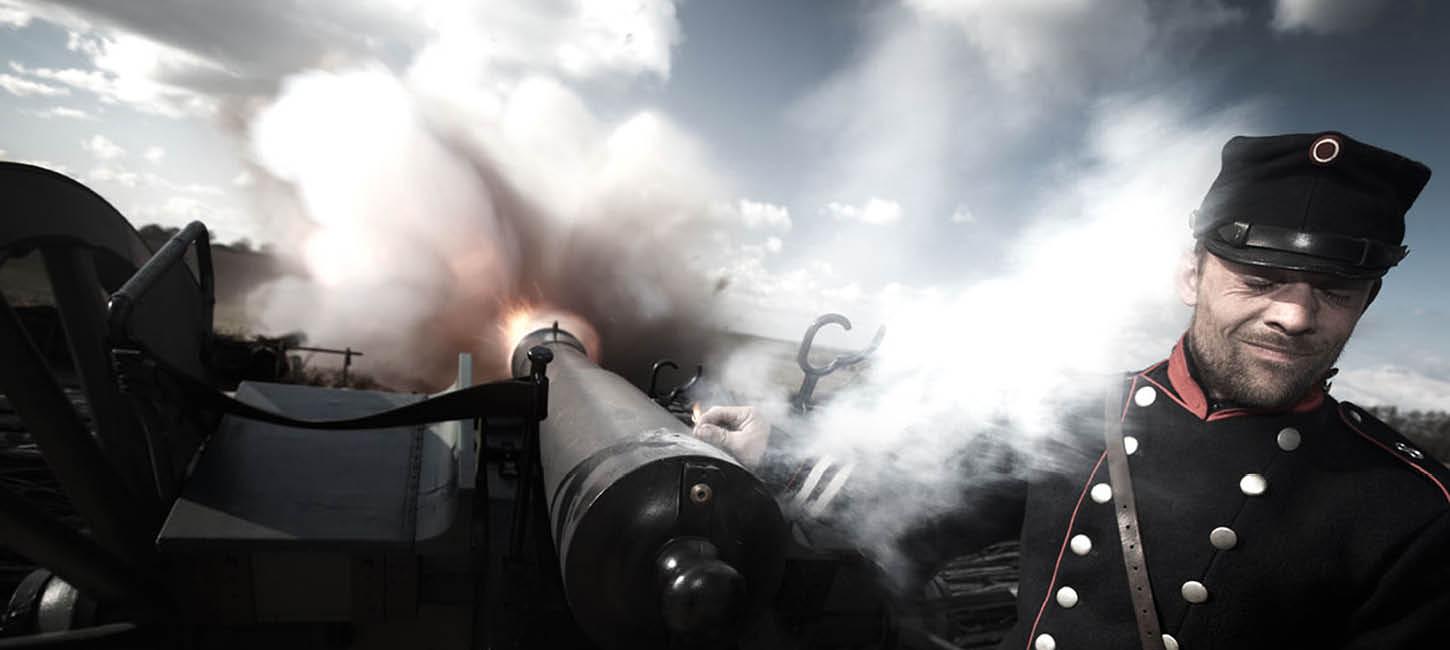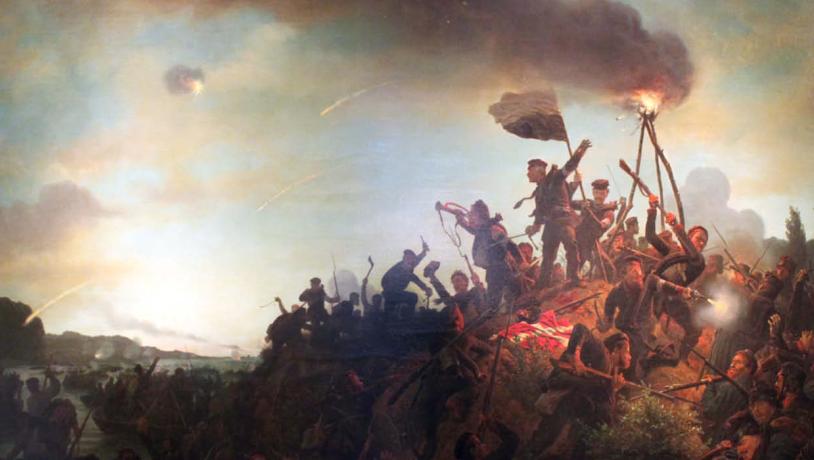History Centre Dybbøl Banke
Enter the dramatically days during the war in 1864, become a part of the drama and get new knowledge on one of the most important battles in the histo...

1864, is the year when Denmark lost Sønderjylland to the Prussian. Until the Reunification in 1920 Sønderjylland and the Sønderborg-area remains under German rule.
- and the war of 1864 is no exception.
The latest focus on these fateful events in Danish history, was the drama series “1864” by the Danish Broadcasting Corporation DR, based on writer and journalist Tom Buk-Swienty’s marvellous books ‘Slaughter Bench Dybbøl’ and ‘Doomsday Als,’ that helped a great deal to create renewed interest in this chapter of Danish history. Buk-Swienty’s works take readers on a journey back to the fateful year and portrays various people and their involvement in the conflict.
The journey will be complete only when you are standing on Dybbøl Banke, looking towards Broagerland, from where the Prussian grenades rained down on the entrenchments, or when, an early morning, you gaze across Alssund towards Sottrupskov forest on the Jutland side from Arnkilsøre, because this is where the final attack was made on June 29, 1864. The history is still present, and closing your eyes you can almost sense the sounds, the smells and the fear.
You can read more about how the war came about on 1864.dk. To experience the entire story, one should start south of the border at the Danevirke. Here, the Danish army was ready to confront the Prussian soldiers when the war broke out on January 31, 1864. After the initial battles, it became clear that the position could not be held, and on February 4, General De Meza decided to defy orders from Copenhagen and initiate a retreat.
The retreat from Danevirke, the night between 5 and 6 February 1864. It takes the 40,000 soldiers 14 hours to march to Dybbøl. The wind from the northwest is directly in their faces and it is down to -10 degrees frost. Along the way, 10 soldiers are lost to the cold, while 120 are captured and 173 desert.
A few kilometres from Schleswig, where the military road crosses Danevirke, lies the Danevirke Museum. Recently, traces were found of the gate that regulated traffic on the military road in antiquity. The museum tells the story of Danevirke and is worth a visit, but you must remember to bring some Euros; the museum does not accept Danish currency or credit cards. 500 metres west of the museum, Danish and German engineer corps have restored the entrenchment Skanse 14 on the basis of old drawings and photographs.
Coming from Gråsten towards Sønderborg, Dybbøl Banke lies as a natural hill that protects the town from the west. There is a fantastic view of the entire area from the entrenchments, and you can see the northern part of the sound Als Sund and the inlet Flensborg Fjord.
A visit to the History Centre Dybbøl Banke provides the best presentation of the battle of 1864 and is an adventure for both children and adults. The Centre communicates the story from both sides of the conflict, which means that, in the peak season, you can meet both a Prussian and a Danish soldier when exploring the Centre. If you wish to explore the entrenchment on your own, a detailed overview map can be obtained at the tourist office
Under the cover of darkness on 29 June, the first Prussian soldiers boarded their boats, took to the water and headed for Als. The Danes discovered far too late that the attack had begun, and they did not have time to react before the area was overrun by Prussian soldiers.

On 29 June, 1864, the Prussians storm the island of Als.Photo:Deutsches Historisches Museum Berlin
If you follow the path Nydamstien, you can still find slideways and depressions in the soil where the rowing boats were put in the water, and you can also see where the Prussian cannons were placed. Pick up a leaflet with the route at the tourist office.
During the event "1864 Days," emphasis is placed on portraying the storming of Dybbøl Banke. April 18 is now an international memorial day, where, during a joint ceremony from the Danish/German side, wreaths are laid at the mass graves on Dybbøl Banke and around the landscape on the Sundeved side and on the Kær Peninsula. Wreaths are placed at the many grave crosses.
If you want more information and to experience the historical sights in Sønderborg related to 1864, join the regular summer tour titled "A Town in Ruins" on the subject.
The loss of the war in 1864 becomes extremely perceptible during WW1 (1914-18), Denmark is neutral and not participating, however the men living in the occupied South Jutland is enrolled in the German army and send to the front.
Get to know more about the war in 1864 during a visit to the History Center Dybbøl Banke. Learn more about its consequences for Denmark and Southern Jutland at the Museum Sønderjylland at Sønderborg Castle, where you can see the exhibition "The Southern Jutlanders and the Great War" until 26 October, 2025.